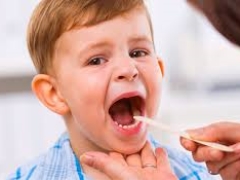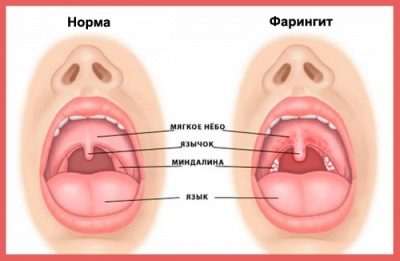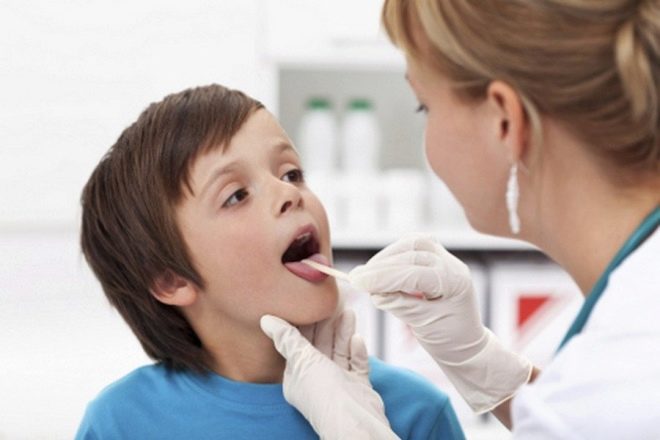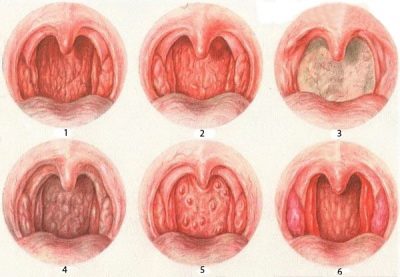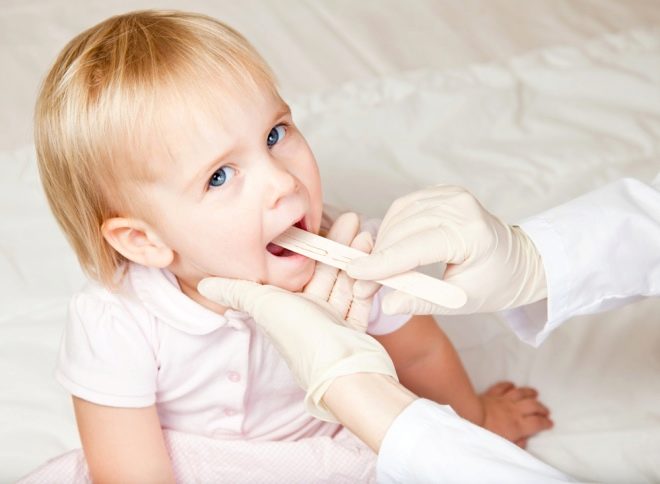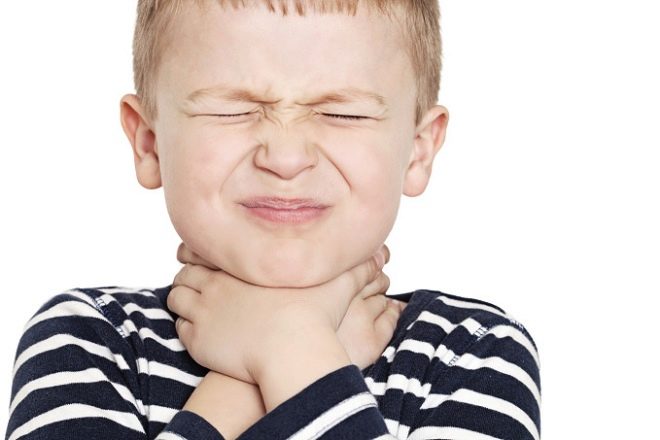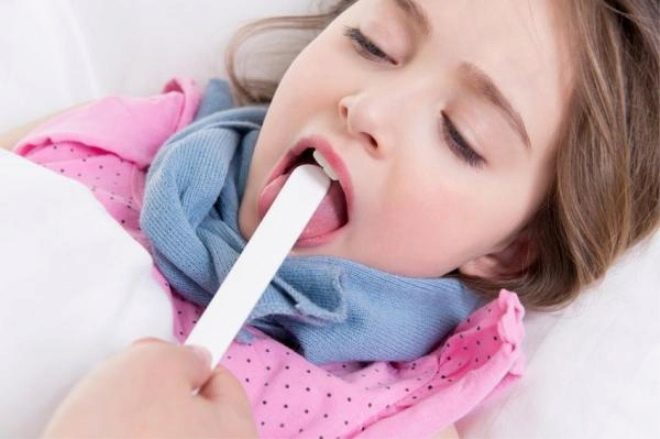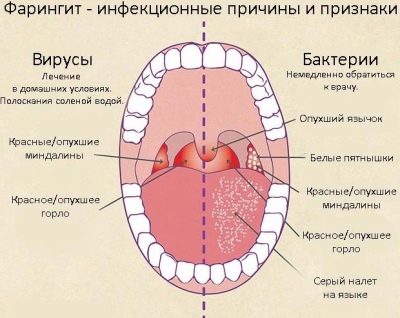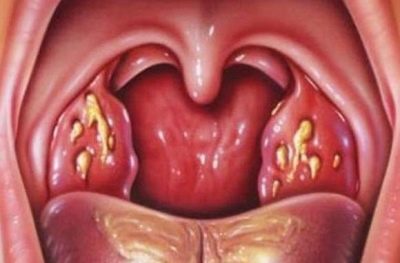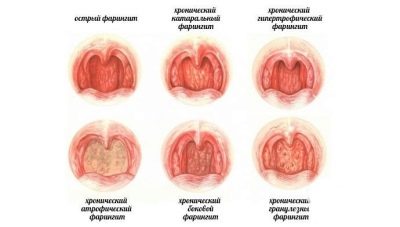What does the throat of a child with pharyngitis look like?
Knowledge of how to recognize different inflammatory pathologies in the oropharynx in a child will be needed by each mother. These diseases are quite common in children's practice. Timely diagnosis allows you to carry out the necessary treatment and cope with the adverse symptoms of the disease. There are many inflammatory processes that occur in the mouth and throat in children. One of these pathologies is pharyngitis.
What causes?
This disease is associated with damage to the mucous membranes of the oropharynx. This pathology is widely distributed throughout the world. You can get sick at any age. According to statistics, children who attend educational institutions are most often affected.
This feature is due to the fact that Most of the pharyngitis is caused by various pathogens. In conditions of crowded groups, viruses and bacteria multiply rapidly and rapidly spread from a sick child to a healthy one. This spread leads to massive outbreaks of the disease.
The main method of transmitting infectious pharyngitis is airborne. Pathogens are absorbed on the smallest particles of saliva and easily get on the mucous membranes during a normal conversation. It is important to note that not only viruses and bacteria are the root cause of the development of pharyngitis. The appearance of adverse symptoms of the disease also leads to a variety of factors.
The oropharynx is an organ that contains a huge amount of lymphoid tissue. Such a biological feature of the human body prevents it from penetrating dangerous infectious pathogens.
Reducing local or systemic immunity contributes to the weakening of immune functions. This leads to easy infection with any infections, including those that lead to the development of pharyngitis.
Main symptoms
The inflammatory process in the pharynx brings the baby some discomfort. The mild course of the disease, as a rule, is tolerated by the child completely tolerant, and his general condition varies only slightly. Severe forms of the disease are dangerous by the development of adverse complications and long-term effects. The severity of symptoms depends largely on how severe the disease is in a particular child.
Clinical signs of inflammation in the pharynx include:
- Moderate or severe pain when swallowing. Inflamed mucous membranes react rather violently to any temperature effects. Eating excessively hot or cold meals can lead to increased pain. Swallowing food particles can also lead to increased pain.
- Redness and puffiness of the throat and the posterior pharyngeal wall. You can identify this clinical symptom yourself at home. To do this, parents should equip the usual teaspoon or wooden spatula, which is sold in any pharmacy.
During such an examination, try not to press hard on the root of the tongue, as this can provoke the appearance of a gagging urge in the baby.
- Tickling. This symptom is most specific for pharyngitis. Disturbance can be expressed slightly or rather strongly disrupt the general well-being of the child. In some cases, the sick baby feels a burning sensation or "sinking" in the throat. Symptom is enhanced by the use of irritating mucous membranes products.
- Intoxication. In most cases, body temperature rises to 37-37.5 degrees or may remain within normal limits. A sick baby has reduced appetite, sleep is worse and mood can worsen.
What do different shapes look like?
The traditional and classic sign of the inflammatory process in the oropharynx is redness and swelling. This symptom occurs in all clinical variants of the disease, regardless of what cause contributed to the development of the disease. However, each form of pharyngitis has its own characteristics in how it manifests itself:
- For viral pharyngitis characteristic pronounced hyperemia (redness) of the visible mucous membranes of the oropharynx and throat. Examination also shows increased tissue infiltration. Outwardly, it looks like the unevenness of the mucous membranes lining the throat and distal oropharynx. Acute viral pharyngitis is also accompanied by pronounced redness of the tonsils, the root of the tongue and palatine arches.
Touching these anatomical elements with a spatula or spoon in some cases leads to the appearance of pain.
- Bacterial forms of pharyngitis - quite common in children. They manifest a pronounced redness of the throat, as well as the possible development of purulent plaque. It is formed with a rather severe course of the disease. Purulent plaque usually yellow. In some cases, it may acquire a greenish color.
- Herpes pharyngitis is also common in babies. It manifests itself by the formation of numerous eruptions on the mucous membranes of the pharynx, which often resemble in appearance the bubbles filled with liquid inside. In some cases, herpetic elements look like small acne on the throat. When the bubbles touch, they are easily injured, and the serous fluid mixed with the ichorus flows out. Herpes variant of pharyngitis is quite difficult with severe intoxication syndrome.
- Granular pharyngitis appears when the inflammatory process spreads deeper than the superficial epithelial lining of the oropharynx. It occurs when the acute process becomes chronic. It is characterized by growth of the lymphoid tissue of the oropharynx, which manifests itself in the form of thickening of the visible mucous membranes. When inspecting the pharynx, numerous irregularities, "bumps" are visible. In the remote stages of the disease, the mucous membrane of the oropharynx becomes smoother, and its surface is shiny and slightly "lacquered."
- Doctors also note that in some cases mixed forms of pharyngitis. They manifest a wide variety of non-specific symptoms. The fundamental criterion for the diagnosis of pharyngitis is the presence of marked redness of the oropharynx and pharynx, as well as the occurrence of wounds, pain or other negative symptoms in a child.
In the next video, a pediatrician and an otorhinolaryngologist will tell parents about when red throat the child may be a sign of pharyngitis.
